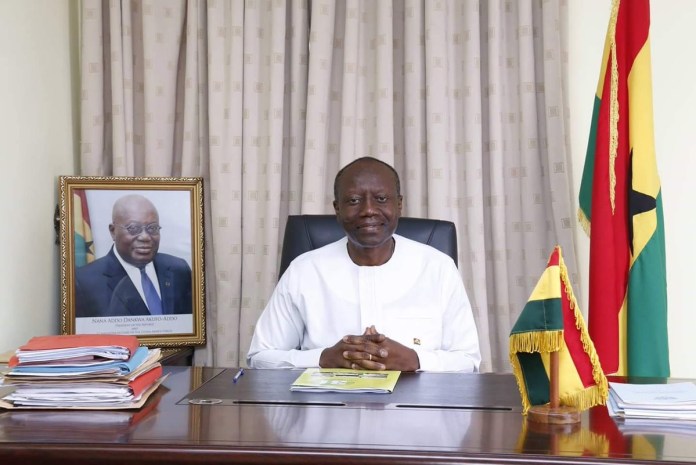Finance and Economic Planning Minister designate Mr Ken Ofori-Atta, has announced in the expenditure in advance of appropriation for January to March 2021 that a whopping GH₵12 billion has been paid as capacity charges to Independent Power (IPPs) since assuming office in 2017.
According to him, this is the reason Ghanaians have enjoyed stable electricity supply since 2017 as opposed to the excruciating rolling power cuts christened ‘Dumsor’ which Ghanaians endured from 2011 to 2016.
Today, many Ghanaians do not even want to hear the word dumsor and the slightest fluctuation in electricity supply reminds them of the dreaded four years of the phenomenon.
The transformation from ‘dumsor’ to stable electricity supply could not have been possible without Mr Ofori-Atta’s resourcefulness to meet Ghana’s financial commitments to IPPs from 2017 to date.
Ghanaians had to go through ‘dumsor’ partly due to government’s inability to pay IPPs to keep the lights on.
The economic impact were far reaching as a study conducted by the Institute of Statistical, Social and Economic Research (ISSER) revealed that Small and Medium Enterprises (SMEs) in Ghana were losing $2.2 million daily due to the power crisis.
According to the findings, businesses lost about $686.4 million annually due to the incessant supply of electricity which has plagued Ghana over the four years.
The persistent unreliable power supply was compounded by bad Power Purchase Agreements (PPAs) that saddled the nation with huge debts in the energy sector.
Sadly, but admittedly this avoidable energy sector debt still poses a threat to the economy for adding up to the country’s debt stock.
Through the instrumentality of Mr Ofori-Atta, government has been able to pay much of the huge debt inherited in the energy sector to ensure that Ghanaians never experienced the dreaded dumsor that brought about painful socio economic crisis to all.
The over GH₵12 billion as the cost of excess energy capacity charges inherited since 2017 was paid for electricity that the country did not use, but had to be paid anyway due to the nature of power contracts signed during the era of the past government.
Ghana has an installed capacity of over 5,000 megawatts and dependable capacity of about 4,700MW with all time high peak demand of 2,700MW.
This means that since 2017, Ghana has had to look for money to pay for about 600MW of excess capacity that was never used.
To address this inimical issue, government crafted an innovative Energy Sector Reform Programme (ESRP) to effectively deal with all key issues in the energy sector that is seen as a pillar to propel the economy Beyond Aid.
Under the ESRP, the government has begun renegotiating with IPPs to convert purchase agreements from Take-or-Pay to Take-and-Pay to put an end to the payment of excess capacity that keeps adding to Ghana’s debt stock.
Though, government attempts at renegotiating with IPPAs seemed a herculean task, with the cordial relations established between the players, certainly there is light at the end of the tunnel for Ghana.
Specifically, government paid $520 million (GH¢2.7 billion) energy sector debt in 2018; $604 million (GH¢3.14 billion) by end of June 2019 with a projected $1 billion (GH¢5.2 billion) payment by end 2019.
The costs to government would increase over time to an accumulated total of over $12.5 billion by 2023 if business as usual in the energy sector continues.
Due to the expensive power purchase agreements that included Pay-or-Take between 2010 and 2016, electricity tariff was increased over an accumulated 268%.
In the midst of persistent unreliable power supply, rising inflation and interest rates as well as fast depreciating cedi, the Public Utilities and Regulatory Commission (PURC) still went ahead to increase electricity tariffs by 59.2% in 2015 to attract competitive private investment.
Once again, the basic excuse was assisting service providers to raise funds for maintenance works and avoid an immediate collapse of the distribution network.
The increases were also in fulfilment of Ghana’s three-year aid deal with the International Monetary Fund(IMF), which the government signed in April, 2015 to restore a fiscal balance and fix the power crisis.
Source: bftonline


